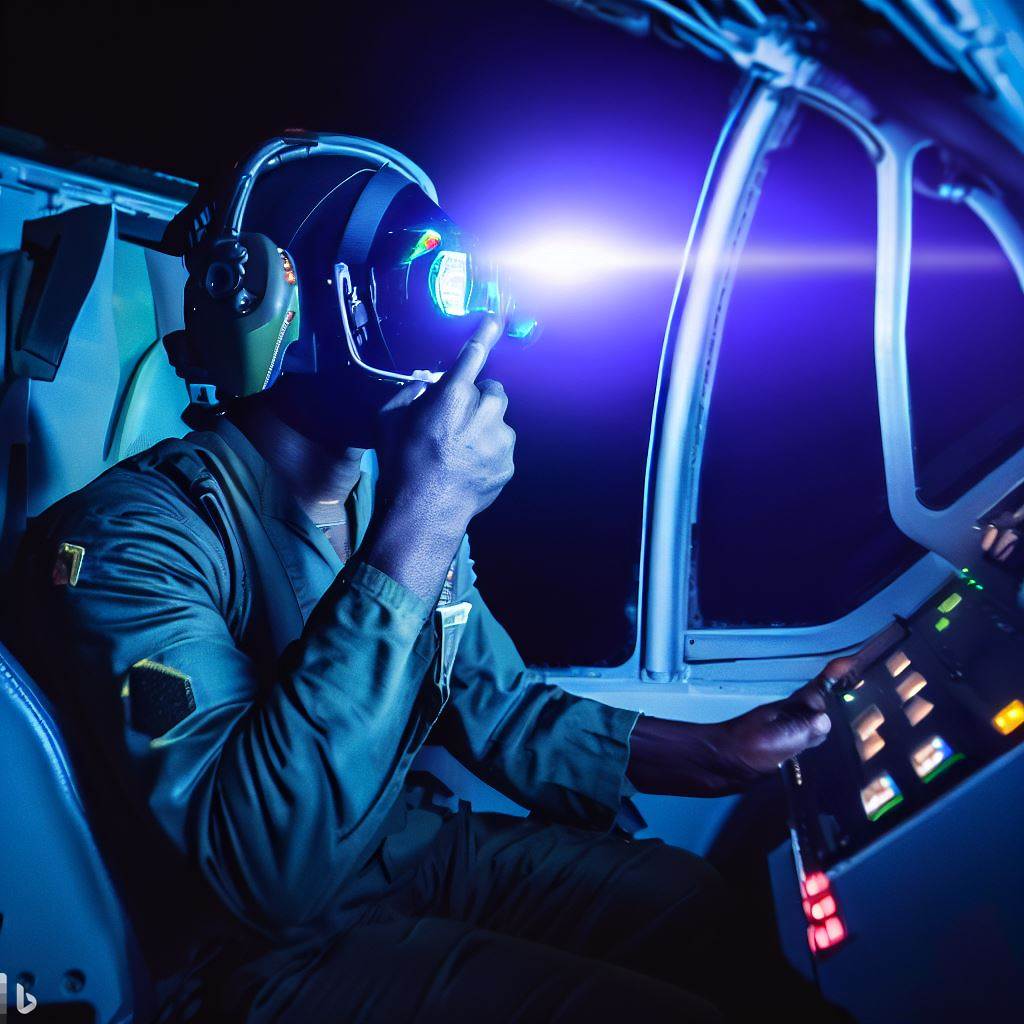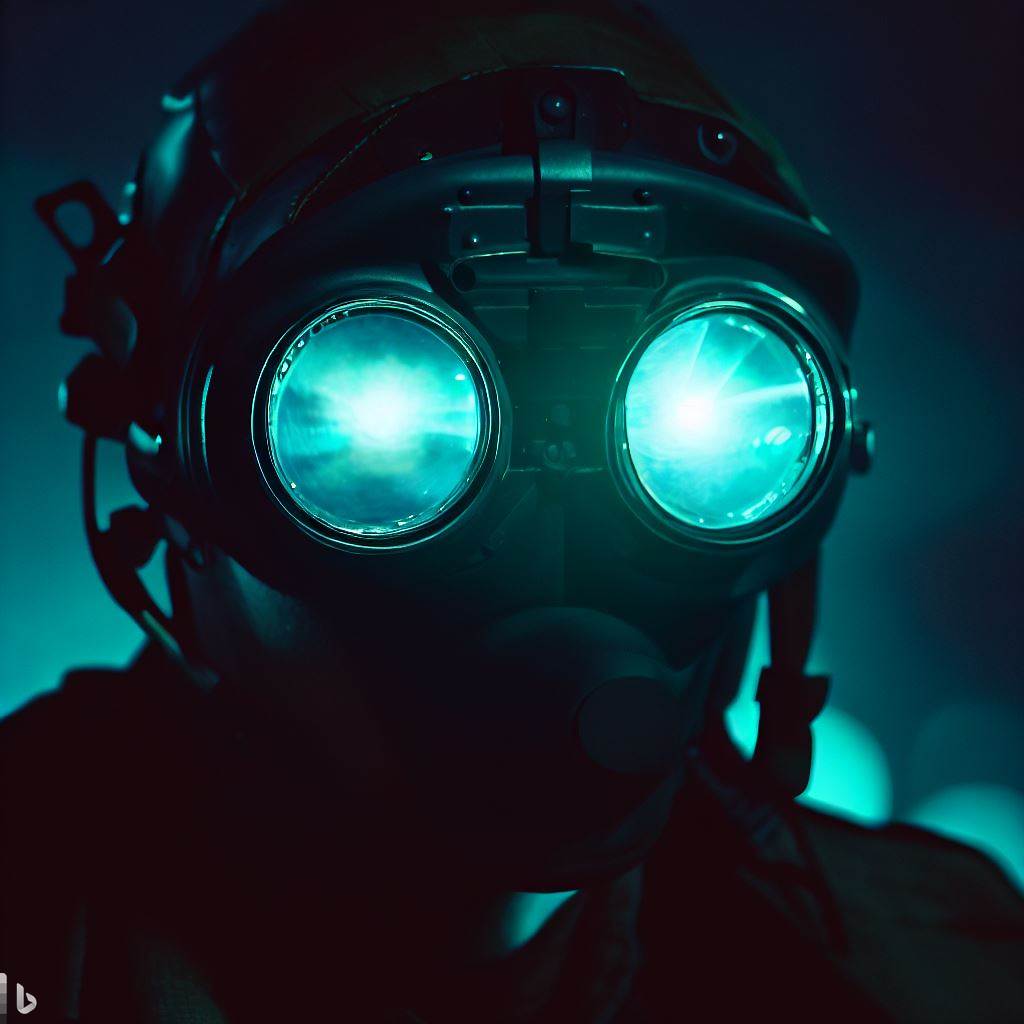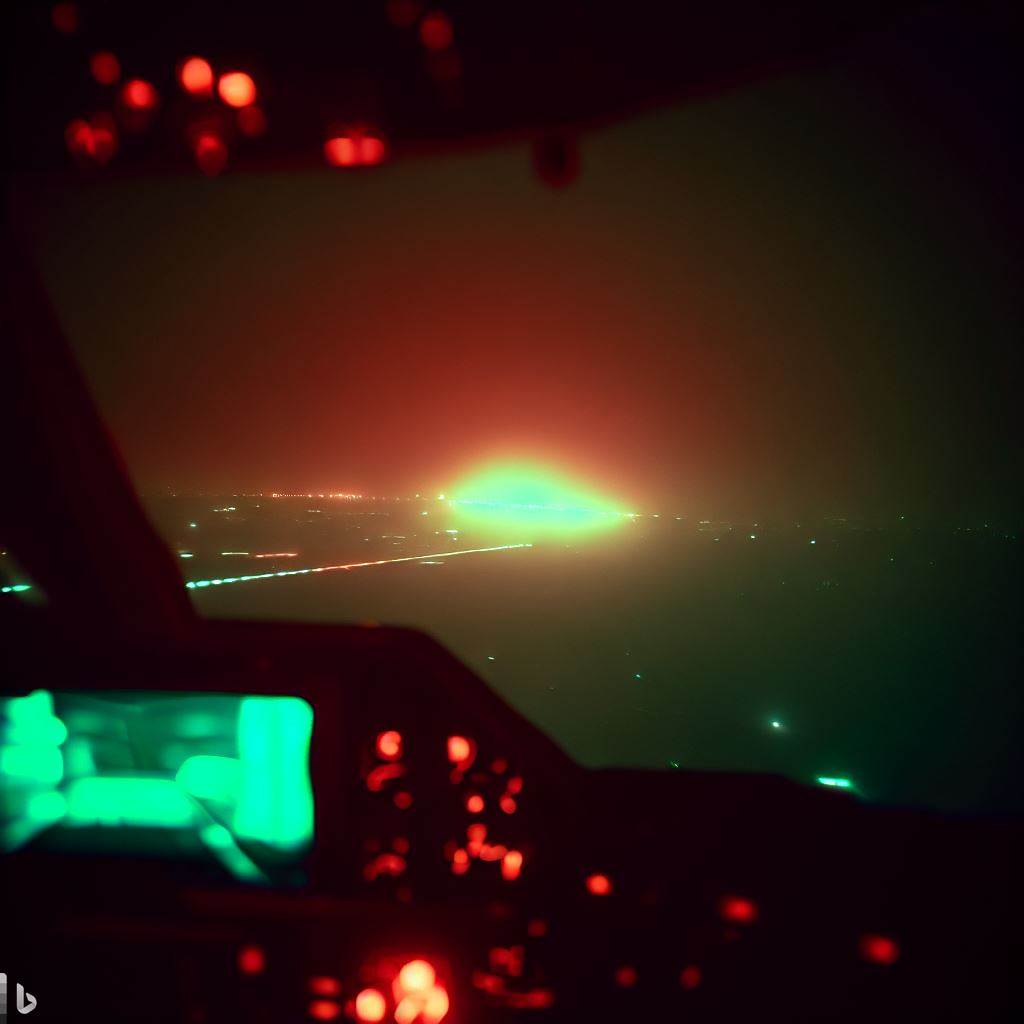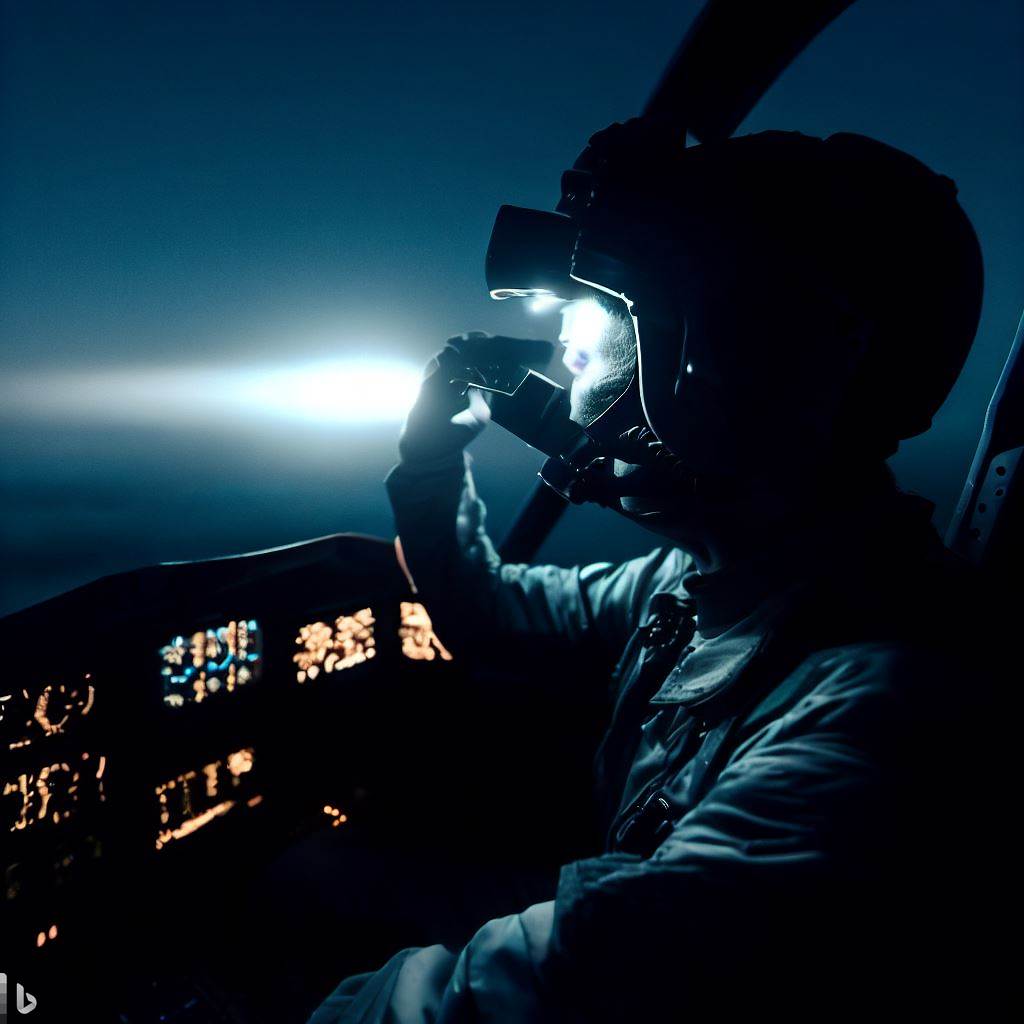

Have you ever wondered Do Jet Pilots Use Night Vision? It’s a question that has interested many aviation enthusiasts. With the darkness of the night posing unique challenges, one might assume that night vision would be a crucial tool for pilots navigating the skies. In this article, we will explore whether or not jet pilots actually rely on night vision technology and discover the factors that determine its use in the cockpit.
Overview of Night Vision
Night vision refers to the capability to see in low-light or dark environments. It is a technology that has revolutionized various industries, including aviation. By utilizing specialized devices, such as night vision goggles and night vision imaging systems, pilots are now able to operate during nighttime conditions with enhanced situational awareness and improved safety.
Night Vision in Aviation
Importance of Night Vision in Aviation
Night vision plays a crucial role in aviation, especially for jet pilots who often fly during the night. It allows pilots to navigate and perform their duties with confidence in darkness or low-light conditions. The ability to see obstacles, runway markings, and other aircraft is vital for maintaining safety and preventing accidents.
Night vision enhances the visual capabilities of pilots, enabling them to effectively carry out their missions, whether it be military operations, commercial flights, or emergency services.
Regulations and Requirements
Recognizing the significance of night vision in aviation, regulatory bodies have established specific requirements and regulations regarding its usage. Jet pilots are mandated to undergo training and certification to operate with night vision devices.
These regulations ensure that pilots are proficient in using night vision technology and are aware of its limitations and potential risks. Compliance with these regulations is essential for maintaining operational safety and standardizing procedures across the aviation industry.
Advancements in Night Vision Technology
Over the years, night vision technology has evolved significantly, driven by advancements in imaging and optical technologies. Newer generations of night vision devices offer improved image resolution, clarity, and sensitivity to low-light conditions.
Enhanced capabilities, such as thermal imaging and the ability to distinguish objects in various lighting conditions, have greatly benefited jet pilots. These technological advancements continue to push the boundaries of night vision, making it an indispensable tool in modern aviation.
Night Vision Devices for Jet Pilots
Night vision devices come in various forms, each tailored to specific applications and requirements. For jet pilots, two primary types of night vision devices are commonly used: night vision goggles (NVGs) and night vision imaging systems (NVIS).
Types of Night Vision Devices
Night vision goggles (NVGs) are binocular devices worn by jet pilots to improve visibility in low-light conditions. They utilize image intensification technology, which amplifies ambient light to provide a clearer image. NVGs enable pilots to see clearly in the dark, enhancing their ability to spot potential hazards and navigate more effectively.
On the other hand, night vision imaging systems (NVIS) employ a combination of specially designed cockpit lighting and filtered goggles to optimize visibility during night operations. NVIS technology ensures that pilots can effectively read instruments, indicators, and maps without compromising their night vision.
This integration of lighting modifications and filtering systems allows for seamless transition between night vision and regular operations.
Night Vision Goggles (NVGs)


Night vision goggles (NVGs) are vital tools for jet pilots as they enable them to see in near-total darkness. These binocular devices use image intensification technology, amplifying available light to create a clearer image. The intensified images allow pilots to perceive their surroundings more vividly, including objects, terrain, and other aircraft.
NVGs also help pilots overcome depth perception issues that occur naturally in low-light conditions, ensuring safer and more precise flight operations.
Night Vision Imaging Systems (NVIS)
Night vision imaging systems (NVIS) are specifically designed to enhance the visibility of jet pilots during cockpit operations at night. By modifying the cockpit lighting, such as instrument panel illumination, NVIS creates an environment that minimizes interference with pilots’ night vision capabilities.
The integration of NVIS into cockpit systems ensures that pilots can read and interpret instruments and display information accurately without compromising their night vision. This technology greatly contributes to the overall safety and situational awareness for jet pilots.
Benefits of Using Night Vision for Jet Pilots


Enhanced Situational Awareness
One of the key benefits of night vision for jet pilots is the ability to achieve enhanced situational awareness. By using night vision devices, pilots can spot potential obstacles, other aircraft, and critical landmarks much more effectively in low-light conditions.
This heightened awareness allows pilots to make informed decisions promptly, preventing accidents and ensuring smooth operations even during nighttime flights. The ability to accurately perceive the environment enhances pilots’ overall situational awareness and improves reaction times, guaranteeing safer and more efficient navigation.
Improved Safety during Night Operations
Night vision technology significantly improves the safety of jet pilots during night operations. With enhanced visibility, pilots can better identify hazards, such as mountains, buildings, or radio towers, and maneuver accordingly. Night vision devices enable pilots to detect other aircraft in the vicinity, reducing the risk of mid-air collisions.
Additionally, night vision enhances pilots’ capacity to read cockpit instruments and displays accurately, preventing errors in critical flight information interpretation. These safety benefits contribute to a reduction in accidents, making night operations for jet pilots considerably safer.
Extended Operational Capabilities
Night vision technology extends the operational capabilities of jet pilots, allowing them to perform missions during nighttime hours that were previously restricted. With the ability to fly and operate in low-light conditions, pilots can execute critical missions, conduct night-time training exercises, or facilitate emergency response operations.
Night vision devices enable jet pilots to accomplish their tasks with the same level of efficiency and safety they would have during daylight operations. This expanded operational window also enhances the overall flexibility and responsiveness of jet pilots, increasing the overall effectiveness of their missions.
Challenges and Limitations of Night Vision
While night vision technology offers numerous benefits, there are also challenges and limitations that jet pilots need to consider.
Limited Depth Perception
One common limitation of night vision devices is the reduction in depth perception. The amplified image provided by night vision goggles or imaging systems can create a perceived flattening of the scene, making it more challenging to accurately judge distances.
Pilots must undergo specific training to compensate for this depth perception issue, enabling them to estimate distances accurately and adjust their flying techniques accordingly.
Reduction in Peripheral Vision
Night vision devices generally provide reduced peripheral vision compared to natural night vision. This limitation is a result of the narrower field of view, which is inherent in many night vision goggles and imaging systems. Pilots need to stay vigilant and consistently maneuver their head to maintain a broad situational awareness.
Training programs focus on training pilots to adapt their scanning techniques to overcome the limitations imposed by the narrower field of view.
Glare and Halos
Night vision devices may also be susceptible to issues with glare and halos. Sources of bright light, such as runway lights or navigation beacons, can create excessive glare or halos, affecting the clarity of the night vision image.
Pilots are trained to recognize and mitigate these issues by adjusting their focus and utilizing techniques that minimize these visual disturbances.
Training and Familiarization
Another crucial factor in utilizing night vision technology effectively is providing adequate training and familiarization for jet pilots. Proper training is essential to ensure pilots understand the functionality, limitations, and potential challenges associated with night vision devices.
Pilots must develop proficiency in interpreting night vision imagery, recognizing key visual cues, and appropriately adjusting their flying techniques to accommodate the peculiarities of night vision. Ongoing training and exposure to night operations help pilots maintain their proficiency and ensure safe and successful night missions.
Integration of Night Vision into Cockpits
Integrating night vision technology into the cockpit environment requires careful consideration and modifications to existing systems.
Cockpit Lighting Modifications
To optimize the effectiveness of night vision devices, cockpit lighting must be modified to minimize interference with pilots’ night vision capabilities. The brightness and color of instrument panel lighting, indicator lights, and display illumination should be carefully adjusted to maintain proper contrast and readability while preserving pilots’ night vision.
This optimization allows for seamless transitions between normal lighting and night vision operations, ensuring pilots can effectively interpret critical flight information.
Compatibility with Avionics
Integrating night vision technology into modern avionics systems poses challenges related to compatibility. Night vision devices must be seamlessly integrated with existing avionics systems, such as navigation displays, communication systems, and other cockpit instruments.
Compatibility issues can arise, particularly with older aircraft models that lack the required connectivity infrastructure. The development of standardized interfaces and compatibility protocols is crucial to streamline the integration process and ensure smooth and efficient night vision operations.
Challenges in Retrofitting Older Aircraft
Retrofitting older aircraft with night vision capabilities presents additional challenges. Some legacy aircraft lack the necessary infrastructure to support the integration of night vision devices seamlessly. In such cases, modifications to electrical systems, wiring, or instrument panels may be required.
These retrofitting efforts can be time-consuming and complex, requiring coordination between aircraft manufacturers, avionics specialists, and regulatory entities. Ensuring the retrofitting process is conducted accurately is crucial to maximize the benefits of night vision technology for pilots.
Night Vision Training for Jet Pilots


Training is a vital component of utilizing night vision effectively in aviation. Pilots must undergo specialized training to become proficient in operating with night vision devices.
Night Vision Training Requirements
Regulatory bodies establish specific training requirements for pilots using night vision devices. The training programs cover various aspects, including the theoretical understanding of night vision technology, its limitations, and best practices for usage.
Pilots must also receive practical training in specific maneuvers, emergency procedures, and instrument interpretation while utilizing night vision devices. Regular recurrent training is essential to maintain proficiency and ensure pilots are up-to-date with the latest developments in night vision technology and procedures.
Simulation and Practical Exercises
Night vision training often incorporates simulation and practical exercises to expose pilots to realistic scenarios. Simulators allow pilots to practice night vision operations in a controlled environment, offering valuable hands-on experience while minimizing risks.
These simulations can provide pilots with exposure to diverse situations, such as adverse weather conditions, emergency procedures, or complex operational scenarios. Practical exercises, including night-time flying, navigation, and mission simulations, are crucial to reinforce the training and enhance pilots’ confidence and competence in night vision operations.
Maintaining Night Vision Proficiency
Beyond initial training, it is essential for pilots to maintain their night vision proficiency over time. Regular practice and exposure to night operations help ensure pilots retain their skills and adapt to any technological advances or changes in procedures.
Ongoing proficiency checks and recurrent training sessions are conducted to verify pilots’ competence and address any areas requiring improvement. By maintaining night vision proficiency, pilots can operate safely and confidently during nighttime hours, maximizing the benefits of night vision technology.
Night Vision Operations in Different Environments


Night vision technology finds applications in various aviation sectors and environments, catering to diverse operational needs.
Military Applications
The military sector heavily relies on night vision technology for a wide range of operations. Jet pilots operating in military roles benefit from night vision capabilities to execute missions such as reconnaissance, surveillance, and combat operations.
Night vision devices enable military aircraft to perform maneuvers with precision, navigate covertly, and detect and engage targets effectively. The advanced imaging provided by night vision enhances the efficiency and effectiveness of military operations in darkness and low-light conditions.
Civilian and Commercial Aviation
Night vision also plays a crucial role in civilian and commercial aviation. Commercial jet pilots utilize night vision technology to ensure safe and efficient operation of flights during nighttime hours. The enhanced visibility and situational awareness provided by night vision devices contribute to a reduction in accidents and enable pilots to meet demanding schedules, even in low-light conditions.
Night vision technology is particularly useful in air ambulance operations, where medical evacuation and emergency flights often occur at night. The ability to operate safely in these challenging conditions can be life-saving.
Emergency Services and Search-and-Rescue
Night vision technology has become an invaluable tool for emergency services, including search-and-rescue operations. Jet pilots assisting in emergency response operations, such as firefighting, disaster relief, or medical evacuations, heavily rely on night vision devices.
The enhanced visibility offered by night vision technology enables pilots to locate and rescue individuals in distress, provide critical support in adverse weather conditions, and ensure their safety and the safety of others involved in emergency operations. Night vision’s ability to extend operational capabilities is particularly essential in time-sensitive situations where each minute can make a difference.
Future Developments in Night Vision Technology


Night vision technology continues to evolve, driven by advancements in imaging, optical technology, and emerging innovations. The future of night vision holds exciting possibilities for further improving visibility and performance.
Advancements in Image Intensification
Efforts are being made to advance image intensification technology to provide even higher levels of clarity and resolution. Ongoing research aims to enhance the sensitivity of night vision devices, allowing for improved visibility in extremely low-light conditions.
This development would greatly benefit jet pilots by providing them with more detailed and accurate visual information during their night operations.
Emerging Technologies
Emerging technologies, such as augmented reality and artificial intelligence, hold the potential to revolutionize night vision capabilities. Integration of augmented reality overlays into night vision devices can provide pilots with real-time information overlays, highlighting obstacles, displaying enhanced navigation data, and even projecting symbology onto the pilot’s field of view.
These advancements have the potential to significantly enhance the effectiveness and efficiency of jet pilots during night operations.
Integration with Augmented Reality
The integration of night vision technology with augmented reality systems provides exciting possibilities for jet pilots. By combining the capabilities of night vision devices with augmented reality overlays, pilots can have access to critical information and situational awareness tools in real-time.
This integration can enhance pilots’ visibility, provide essential data overlays, and enable more effective decision-making during night operations. The seamless integration of night vision and augmented reality is a frontier that holds tremendous potential for enhancing safety and operational efficiency for jet pilots.
Conclusion
Night vision technology has become an invaluable asset for jet pilots, enabling safe and efficient operations during nighttime hours. From night vision goggles to night vision imaging systems, jet pilots benefit from enhanced situational awareness, improved safety, and extended operational capabilities.
While night vision brings numerous advantages, pilots must be aware of the challenges and limitations associated with its use, including reduced depth perception and peripheral vision. Proper training, familiarization, and maintaining proficiency are crucial aspects of utilizing night vision effectively in aviation.
As night vision technology continues to evolve, the future holds exciting possibilities for further advancements, such as improved image intensification and integration with augmented reality. With these advancements, jet pilots can expect even greater capabilities and enhanced safety during night operations.
The Ultimate Guide to the Top 5 Night Vision Binoculars for Hunting
Top 5 Night Vision Monoculars for Hunting in 2023 | Best Rating
How Do I Minimize Noise When Using Night Vision For Hunting?




